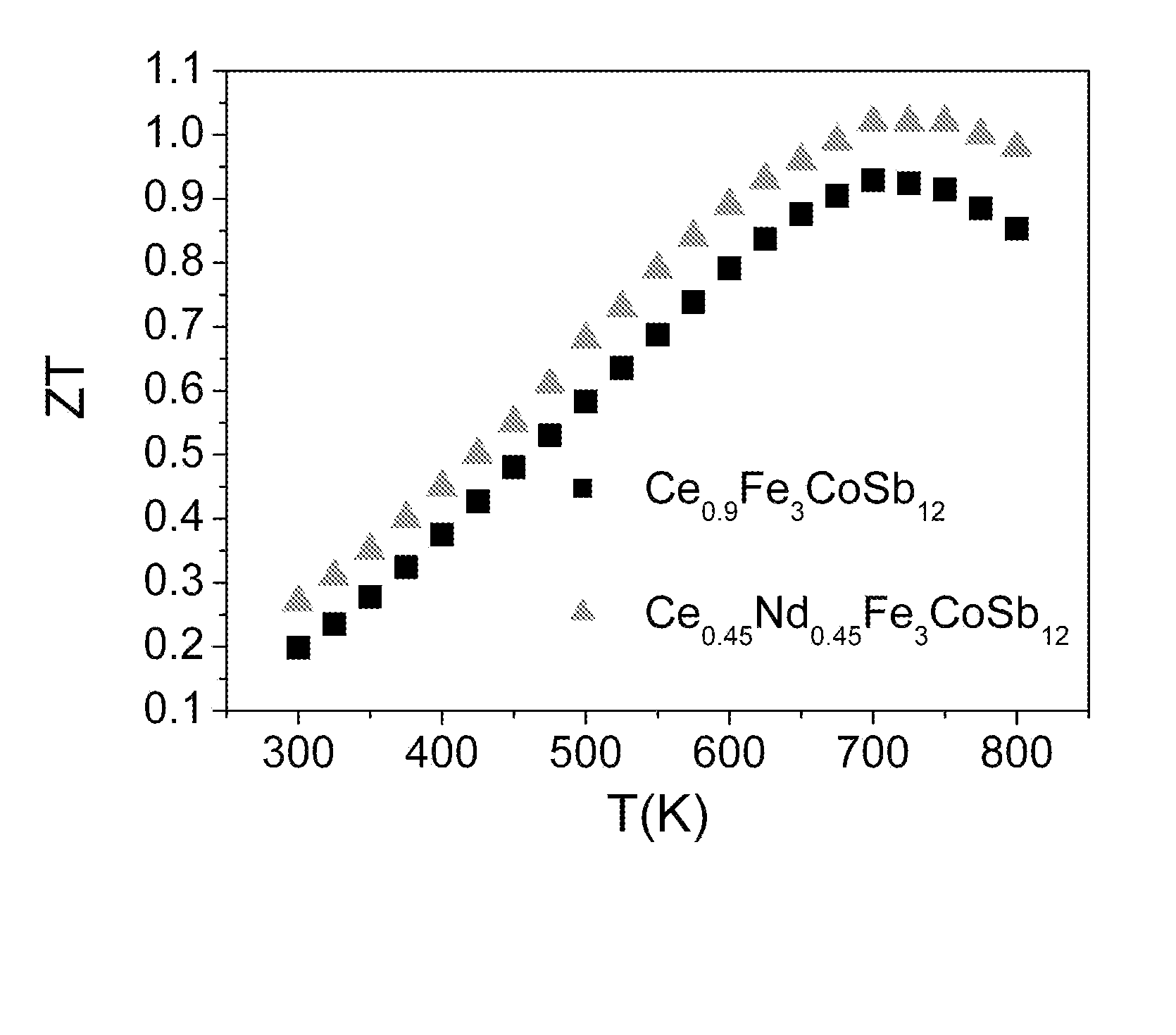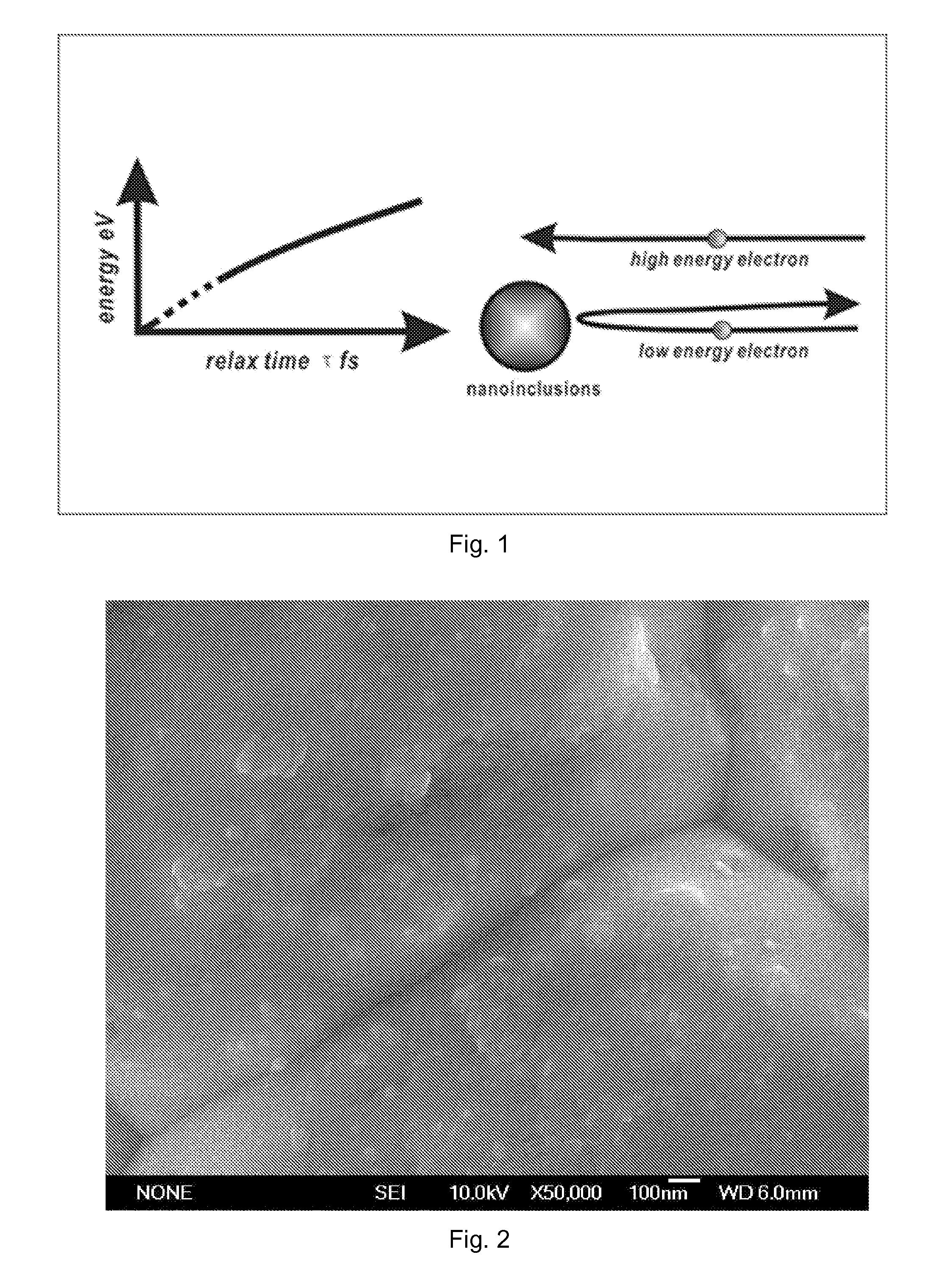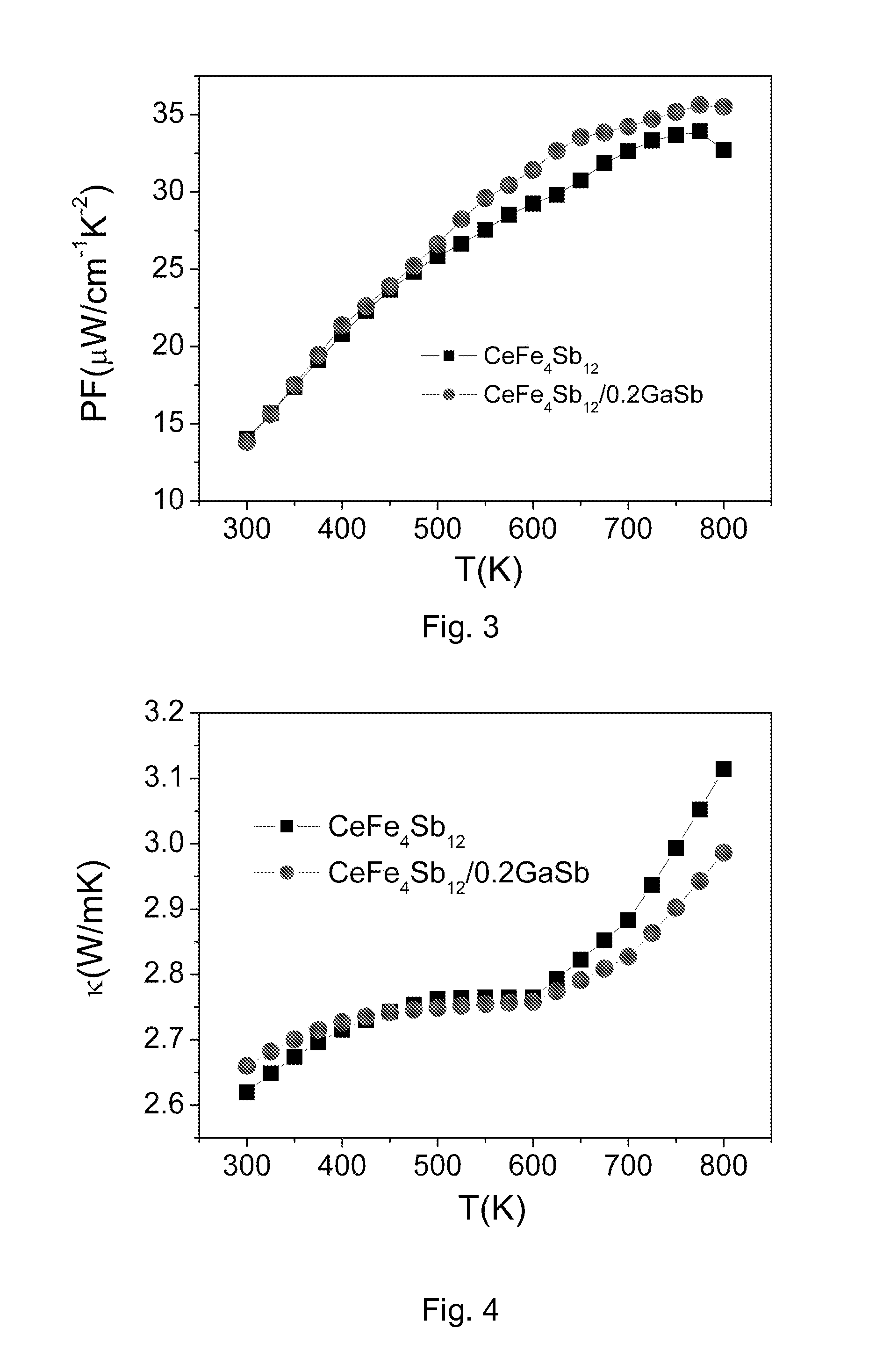P-type skutterudite material and method of making the same
a skutterudite material and skutterudite technology, applied in the direction of thermoelectric device junction materials, etc., can solve the problems of increasing the difficulty of materials preparation, difficult to accurately control the oxidation condition of the matrix, and long process period, etc., to reduce total thermal conductivity, increase the zt value, and increase the power factor
- Summary
- Abstract
- Description
- Claims
- Application Information
AI Technical Summary
Benefits of technology
Problems solved by technology
Method used
Image
Examples
example 1
CeFe4Sb12 / 0.2GaSb Composite Material
[0053]Highly pure metal raw materials Ce, Fe, Sb and Ga were weighted in molar ratio 1:4:12.2:0.2 in a glove box. The raw materials were put into quartz tubes, in which the whole wall was coated with carbon film. The quartz tubes were vacuumed and sealed by Ar plasma. The raw materials were melted at 1000° C., and the duration time was 12 hrs. Subsequently, the quartz tubes were quenched in saturated salt water at a quenching rate of about 300° C. / sec. And then the condensated bulks (still in quartz tubes under vacuum) were annealed at 700° C. for 120 hrs. The obtained fine powders of CeFe4Sb12 and CeFe4Sb12 / 0.2 GaSb composite grounded from bulks were consolidated by spark plasma sintering (SPS) at 600° C. for 5 min under a pressure of 50 MPa. The results of phase analysis, structure, and thermoelectric properties are shown in FIGS. 2 to 5. The FESEM image shows that the second phase (GaSb phase) is well dispersed on or within the boundary of the ...
example 2
Ce0.45Nd0.45Fe3CoSb12 Material
[0054]Highly pure metals raw materials Ce, Nd, Fe, Co and Sb were weighted in molar ratio 0.45:0.45:3:1:12 in the glove box, respectively. The raw materials were put into a quartz tube, in which the whole wall was coated with carbon film. The quartz tubes were vacuumed and sealed by Ar plasma. The raw materials sealed in quartz tubes were heated with ramp rate 3° C. / min and melted at 1000° C., and the duration time was 12 hrs. Subsequently, the quartz tubes were quenched in saturated salt water at a quenching rate of about 300° C. / sec. And then the condensated bulks (still in quartz tubes under vacuum) were annealed at 600° C. for 200 hrs. The obtained fine powders grounded from bulks were consolidated by spark plasma sintering (SPS) at 600° C. for 10 min under a pressure of 60 MPa. The thermoelectric properties are shown in FIGS. 6 to 8. Tests indicate that Ce0.45Nd0.45Fe3CoSb12 has increased power factor as compared with the (single) filled skutterudi...
example 3
CeyFexCo4-xSb12 / 0.1GaSb Material
[0055]Highly pure metals raw materials Ce, Fe, Co, Sb and Ga were weighted in molar ratio 0.6:0.4:3:1:12.1:0.1 in the glove box, respectively. The raw materials were put into a quartz tube, in which the whole wall was coated with carbon film. The quartz tubes were vacuumed and sealed by Ar plasma. The raw materials sealed in quartz tubes were heated with ramp rate 1° C. / min and melted at 1050° C., and the duration time was 10 hrs. Subsequently, the quartz tubes were quenched in saturated salt water. And then the condensated bulks (still in quartz tubes under vacuum) were annealed at 650° C. for 96 hrs. The obtained fine powders grounded from bulks were consolidated by spark plasma sintering (SPS) at 550° C. for 20 min under a pressure of 50 MPa.
PUM
| Property | Measurement | Unit |
|---|---|---|
| Temperature | aaaaa | aaaaa |
| Temperature | aaaaa | aaaaa |
| Pressure | aaaaa | aaaaa |
Abstract
Description
Claims
Application Information
 Login to View More
Login to View More - R&D
- Intellectual Property
- Life Sciences
- Materials
- Tech Scout
- Unparalleled Data Quality
- Higher Quality Content
- 60% Fewer Hallucinations
Browse by: Latest US Patents, China's latest patents, Technical Efficacy Thesaurus, Application Domain, Technology Topic, Popular Technical Reports.
© 2025 PatSnap. All rights reserved.Legal|Privacy policy|Modern Slavery Act Transparency Statement|Sitemap|About US| Contact US: help@patsnap.com



